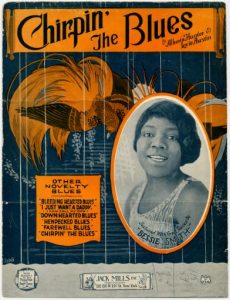The Blues being a form of “secular folk music” evolving in the early 20th century by African Americans primarily in the South is survived through the culture and the people which it makes an impression on. It is fascinating to see the Blues’ outreach into Latin American countries, especially those with high populations of African Americans and the ways that these regions have been impacted by the Blues musical style in the political atmosphere in the world.
In Baraka’s, Blue People, “Introduction” and “African Slaves/ American Slaves: Their Music,” Blues is described as “the parent of all legitimate jazz” but it is difficult to know the exact age of the Blues since it comes with the presence of Black folk themselves in the United States since it is “the product of the black man in this country…blues could not exist if the African captives had not become American captives” (17). Furthermore, because of the history that Africans were indeed not originally Christian, this connects into the religious ties of the music thereafter which “celebrated the various cultic or ritualistic rites had to undergo a distinct and complete transfer of reference” (18).
In January 1965, the University of Michigan Jazz Band went on tour traveling to a multitude of Latin American countries and served as a case study to see "the far-reaching effects of cultural diplomacy...Both archival and oral history evidence indicate that the Michigan jazz band's tour succeeded in building vital imagined connections across international borders"<1>. The jazz band tour was a force that sew the essential role of musicianship in "fostering new transnational sensibilities.
Baker’s notion of the Blues is described “as a matrix” and “enabling script” for a comparative reading of texts by black writers from the United States, the Caribbean, and Africa.” Engaging in Blues and jazz there is a widespread incorporation of the music from black writers in the United States, the Caribbean, and Africa. It is said that “the writers of these texts engage in acts of identity through the use of blues and their creative work”.<2>
There is a concentration of African American population in the Caribbean so seeing the “Rhythm and the Blues: Caribbean Awards” source we can see the outreach that the Blues has had.<3> In The Music Education in the Caribbean and Latin America: A Comprehensive Guide, it goes into ways the music education system in Latin American and Caribbean islands incorporate the importance of the Blues into their school system.<4>
Lastly, a new method of “Caribbean literary analysis” draws from the “blues tradition in African American literature—similar to the way that reggae music borrows from the blues—and in so doing, highlighted the artistic and cultural influences that link people of color”. This further explores the theory through history as the “Blues and reggae in contemporary fiction manifest the oral tradition in African storytelling”.<5>
1.) FOSLER-LUSSIER, DANIELLE. “Cultural Diplomacy as Cultural Globalization: The University of Michigan Jazz Band in Latin America.” Journal of the Society for American Music 4, no. 1 (2010): 59–93. https://doi.org/10.1017/S1752196309990848.<1>
2.) Makuluni, Dean Edson. “Narrating the Blues: Music and Discursive Strategies in Selected African-American, Afro -Caribbean and Black South African Fiction.” ProQuest Dissertations Publishing, 1999.<2>
3.) McAdams, Janine. R&B ARTISTS & MUSIC: The Rhythm and the Blues: Caribbean Awards Say Hello To Banton. Billboard (Cincinnati, Ohio. 1963). Vol. 105. New York: P-MRC, 1993.<3>
4.) Torres-Santos, Raymond. Music Education in the Caribbean and Latin America: A Comprehensive Guide. 1st ed. Blue Ridge Summit: Rowman & Littlefield Publishers, 2017.<4>
5.) Washington, Lynn. “‘Reggae Got Blues’: The Blues Aesthetic in African American Literature as a Lens for the Reggae Aesthetic in Anglophone Caribbean Literature.” ProQuest Dissertations Publishing, 2013.<5>


